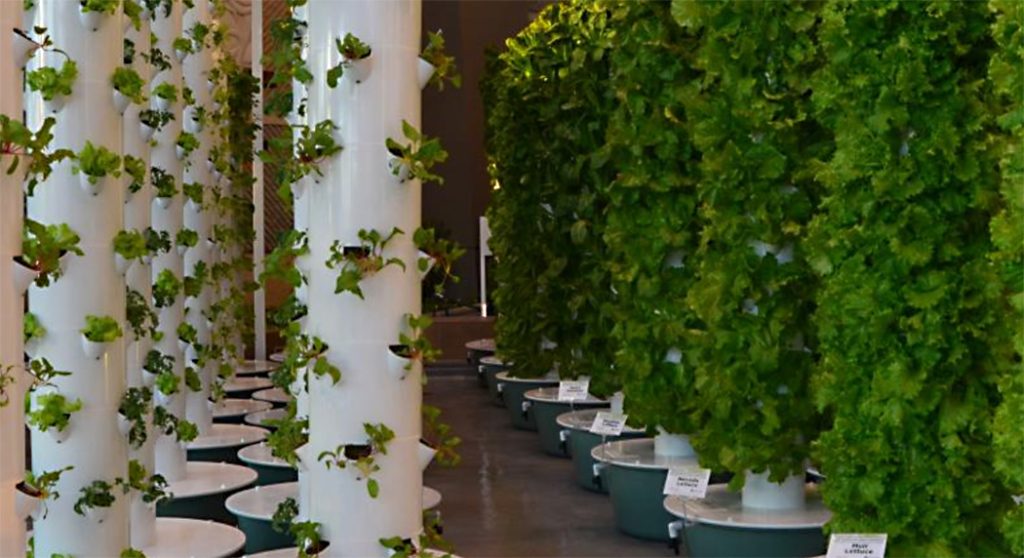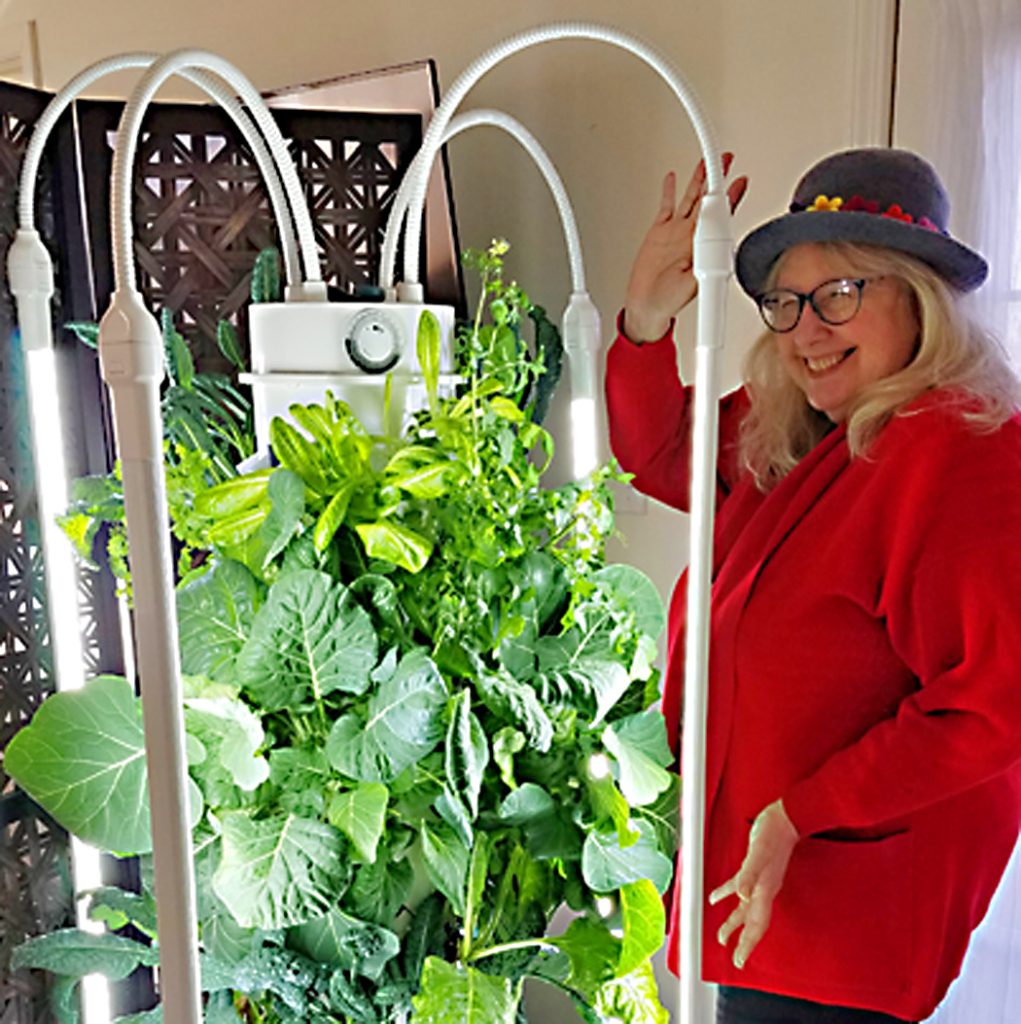
How can you grow a winter garden in January? Inside. In November 2022, my husband and I bought a vertical gardening system. By early January, we were eating salads, making green drinks, and mixing fresh herbs into our soups. Every day, we harvested nutrient-rich organic veggies, locally sourced from our living room. No green thumb needed. No soil either. No bending. No weeding. No trucks traveling long distances to the grocery store on winter roads.
As a child, I visited EPCOT’s “Living with the Land” exhibit. I remember wandering through rooms of aeroponic gardens (a method of growing plants without soil) in a working display of the vertical gardening system. Last winter, 40 years later, I visited EPCOT again and the gardens are still there! The food they produce is distributed to food banks, restaurants, and schools.
Aeroponics is the process of growing plants without soil. Vertical gardening is the design. Plants are grown in a closed environment of air or mist—the same technology that NASA uses. After NASA’s success with aeroponics on the MIR space station in 1997, the use of soilless vertical gardening systems became popular on Earth.
What Is a Vertical Garden?
A vertical garden is a way to describe tall or stacked container gardens. There are DIY versions as well as commercial versions with a fountain of water and minerals pumped up a center tower to feed the plants. They can be made from wood, metal fencing, or plastic.
My vertical garden is five feet tall and two feet wide, and it silently grows inside my living room using full-spectrum lights. I have a second vertical garden growing outside using the sun, which operates on a pump timer.
Whenever I walk by the towers, I have a snack. I love the arugula!
What the Research Says
Currently, people in over 40 countries are growing food vertically—inside their houses, on the roofs of apartment houses, and in greenhouses. Some public schools have even included programs to incorporate vertical gardens in classrooms, allowing kids to start small businesses that sell their organic produce at farmers markets.
Research studies of vertical gardening by NASA and universities have found that in comparison to their soil-grown equivalents, aeroponic plants absorb more minerals and vitamins, grow bigger and faster, and have a high nutrient content and antioxidant equivalent. Plant roots are provided with oxygen and consistent moisture, encouraging rapid, healthy growth.
Vertical gardening uses less land, and some models recycle the nutrient water. With the advent of hotter weather, indoor gardening is an important addition to growing food crops.
Plant, Harvest, Eat, Repeat
How is it done? First, I germinate my choice of seeds under full-spectrum light bulbs. When they are big enough, in about two weeks, I transfer the seedlings to my vertical garden system.

As they grow, I add nutrients and minerals, water consistently, manage the pH, and set the timer on the fountain pump. Within a few weeks, I harvest herbs and greens. When the plants bolt, we start over and replant.
Vertical indoor gardening is a sustainable hobby for me and a way to generate part of my own food supply. Plus, it’s fun to pick the food I need as I need it!
Feel free to contact me if you have questions: madebyhans@gmail.com or (641) 226-0648.
